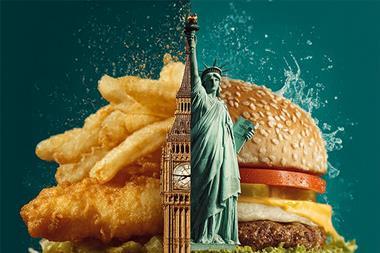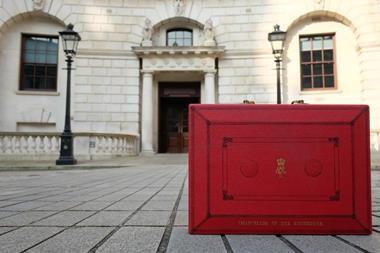According to the latest analysis by Fourth, real hourly pay in hospitality has raced ahead of the National Living Wage to hit £7.71 and could rise to £8.50 by April. Fourth’s Mike Shipley analyses why pay has increased at such a pace, how the gap between London and the rest of the UK is narrowing and what employers are doing to mitigate the added costs.
As the sector’s focus narrows on the all-important festive trading period, it is clear that UK eating and drinking-out groups are operating in changed times. There are plenty of challenges out there – not least on the cost side as businesses work hard to defend profit margins, recover ground against rampant cost inflation and battle to retain the economic viability of some of their sites.
In a matter of a few months, hospitality businesses have swallowed swingeing labour cost hikes against the backdrop of a very competitive trading environment, and many are faced with the prospect of currency-driven price surges on certain buying contracts in 2017 and 2018 (unless sterling recovers, of course). The big cost game-changer in 2016 was the introduction of a mandatory national living wage (NLW), which was introduced for all workers over-25, setting their minimum hourly pay at £7.20. This was a sharp increase from the over-25 cohort’s previous base pay of £6.70, – which became the national minimum wage (NMW) and applied to everyone aged between 21 and 24 until last month when it rose to £6.95 – and follows other incremental employment costs such as workplace pensions and the apprenticeship levy.
And this, all introduced by a government that, as we all know, soon after plunged the country into a heightened period of economic uncertainty with the referendum on the European Union, which produced a ‘leave’ result.
Significant pay inflation
Latest figures from Fourth Analytics show that actual pay has surged ahead in the intervening six months since the new NLW came into force in April, in startling fashion. And not just for over-25s, but across all age groups. For clarity, the numbers set out in this article are drawn only from workers that receive an hourly wage, so the averages are not artificially pulled up by the pay of salaried staff, such as (typically) general managers, deputies and shift managers.
Taken from a sample of thousands of hourly paid UK hospitality workers from hundreds of companies, the actual average rate has now hit £7.71. Just to be clear, this figure (of £7.71) is an average based on the analysis of the hourly pay of all age cohorts – including under-21s and workers aged between 21 and 24. So the new NLW for over-25s has served as an anchor from which actual pay has bolted forward.
This macro trend is more pronounced when the average pay of the under-21 group is removed – pay for all over-21s (receiving an hourly rate) in hospitality has hit £7.92, which is 72p – or 10.0% – ahead of the legal NLW (of £7.20). The bottom line is that businesses are clearly experiencing very strong employment-cost inflation. Actual average hourly pay across all ages in hospitality has risen by 12.6% in the past two years.
Why the pay increase?
The main factor is evidently the intense competition for people, not just within hospitality but also from other sectors such as retail, where some of the big supermarket groups and companies like Ikea have moved pay rates well beyond £8. The general intense competition in the jobs market is thought to be the reason why pay has surged, not just among the over-25 cohort, but across all age bands, as companies introduce wage parity policies. Around the margins, the approach of some companies to tipping may be impacting the headline hourly rate too, although this is very much a secondary factor to that of competition and staff shortages in certain roles, notably in the kitchen.
For an industry where broadly half of its workforce comes from beyond the UK, Brexit is potentially a huge issue and however we leave the European Union, the industry and its lobbyists will need to make what should be a compelling case to continue sourcing staff from overseas.
Notable trends
One point of interest in the latest figures on hourly pay is that the gender pay gap has completely disappeared, overall. Previously men earned more – 13p more per hour in June 2016 and 21p more in 2014.
This latest figure suggesting parity is blended from across hospitality, with men still earning more on average in the pub and restaurant sectors, but women paid more in the quick-service restaurant (QSR) and hotel sectors.
Another point of interest is that since the introduction of the NLW in April, the regional pay gap between London and outside (beyond the M25) has narrowed – from 25p in 2014-2015, to 11p (October 2016).
Consequently, companies with operations outside of London have seen staffing costs rise more sharply, placing pressure on operating margins. While businesses outside the M25 may have experienced the higher wage rate inflation to date, pay rates inside the M25 are under pressure.
Sainsbury’s, Ikea and 800 other London businesses are already paying the so-called ‘London Living Wage’, which is in excess of £9 so, going forward, actual pay inside the M25 may push forward faster.
Hourly pay inflation in 2017
The key issue now is where do these figures go from here. Clearly it is difficult to predict whether this momentum will continue, but there’s no sign of a levelling off at the moment.
Based on the current trends, we expect to see the hourly rate average in UK hospitality approaching £8 by January, and we could well see average rates nearing as much as £8.50 by April 2017 – when the next incremental increase comes into force. This will see the minimum legal national living wage (for over-25s) move up to between £7.50 and £7.65.
Productivity programmes
There is some good news. It is clear that many companies are engaged in efficiency drives. When it comes to people, our clients are looking at productivity programmes and initiatives, such as smarter rota scheduling and driving the amount of revenue taken per worker per labour hour. It is one of the key ways that hospitality and leisure companies can combat this era of aggressive labour inflation.
And so while the hospitality industry is experiencing significant wage growth, it also seeing growth in sales achieved per worker per labour hour, which has risen from £31.94 in 2014 to £34.88.
This work appears to have mitigated labour costs as a percentage of sales, which, in the past two years, has risen from 27.3% to 28.0%.
■ Mike Shipley is Analytics & Insight Solutions Director at Fourth, the leading provider of management software systems to the hospitality industry









































